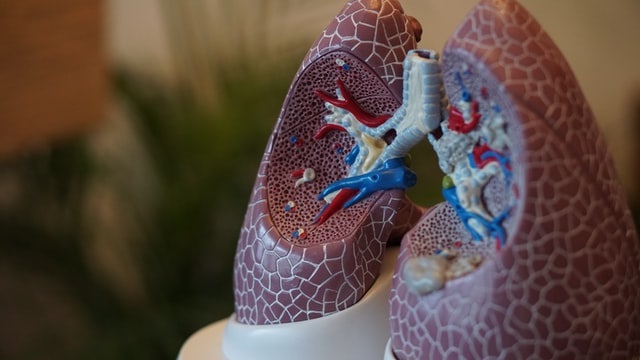12 ALK Inhibitors for Lung Cancer
- EB Virus Could Be Infected by Kiss: A Hidden Threat Linked to Cancer
- The Silent Threat: How Gas Stoves Pollute Our Homes and Impact Health
- Paternal Microbiome Perturbations Impact Offspring Fitness
- New Report Casts Doubt on Maradona’s Cause of Death and Rocks Manslaughter Case
- Chinese academician unable to provide the exact source of liver transplants
- Early Biomarker for Multiple Sclerosis Development Identified Years in Advance
12 ALK Inhibitors for Lung Cancer
- AstraZeneca Admits for the First Time that its COVID Vaccine Has Blood Clot Side Effects
- Was COVID virus leaked from the Chinese WIV lab?
- HIV Cure Research: New Study Links Viral DNA Levels to Spontaneous Control
- FDA has mandated a top-level black box warning for all marketed CAR-T therapies
- Can people with high blood pressure eat peanuts?
- What is the difference between dopamine and dobutamine?
- How long can the patient live after heart stent surgery?
12 ALK Inhibitors for Lung Cancer.
In non-small cell lung cancer (NSCLC), there are numerous oncogenic driver gene mutations, such as EGFR, ALK, ROS1, BRAF, KRAS, NTRK, etc.
Among these, Anaplastic Lymphoma Kinase (ALK) fusion/rearrangement is the second most common driver gene mutation, occurring in approximately 3%-7% of cases.
Despite its lower occurrence rate, ALK mutations have shown higher efficacy when treated with ALK-targeted therapies compared to other targeted drugs, with a five-year survival rate exceeding 60%.
Currently, several ALK inhibitors have been approved worldwide for ALK-mutated NSCLC.

1. Crizotinib
Crizotinib, developed by Pfizer, is a multi-target inhibitor (ALK, MST1R, ROS, c-Met/HGFR). It was the world’s first ALK inhibitor and belongs to the first generation of ALK inhibitors. It was initially approved by the US FDA on August 26, 2011, and by China’s NMPA in 2013, making it the first ALK inhibitor approved for the treatment of ALK or ROS-1 fusion gene-positive NSCLC in China.
Phase III PROFILE 1014 study compared Crizotinib with standard chemotherapy (pemetrexed plus cisplatin/carboplatin) as first-line treatment for advanced ALK-positive non-squamous NSCLC patients. Results showed that Crizotinib was significantly more effective than chemotherapy. The objective response rate (ORR) for the Crizotinib group and chemotherapy group was 74% and 45%, respectively. The median progression-free survival (PFS) was 10.9 months for Crizotinib and 7.0 months for chemotherapy. The median duration of response (DOR) was 11.3 months for Crizotinib and 5.3 months for chemotherapy. The median overall survival (OS) was not reached for Crizotinib and 47.5 months for chemotherapy. However, most patients, whether with or without brain metastases, eventually experienced brain progression after 1-2 years of Crizotinib treatment, with 71% of patients with brain metastases and 27% of those without reporting intracranial lesions.
2. Ceritinib
Ceritinib, a second-generation ALK inhibitor, is the second ALK inhibitor to be approved globally. It has 20 times the inhibitory effect on ALK-positive tumor cells compared to Crizotinib and can act on tumor cells resistant to Crizotinib. Ceritinib was approved in the United States in April 2014 for ALK-positive metastatic NSCLC patients who are intolerant or progressed on Crizotinib. It was approved in China in 2018.
Phase III ASCEND-4 study compared Ceritinib with standard chemotherapy as first-line treatment. Results showed that the ORR for Ceritinib and chemotherapy was 72.5% and 26.7%, respectively. The median PFS was 16.6 months for Ceritinib and 8.1 months for chemotherapy. Notably, in patients without brain metastases, Ceritinib demonstrated longer median PFS compared to chemotherapy (26.3 vs. 8.3 months), and in patients with brain metastases, Ceritinib also outperformed chemotherapy in terms of median PFS (10.7 vs. 6.7 months). Based on this study, Ceritinib was approved for first-line treatment of ALK-positive NSCLC.
Phase III ASCEND-5 study compared Ceritinib with second-line standard chemotherapy. The study included patients who had previously received chemotherapy and Crizotinib and showed that Ceritinib significantly extended PFS compared to chemotherapy (5.4 vs. 1.6 months). This study suggested that Ceritinib is a better choice for patients who failed Crizotinib treatment.
3. Alectinib
Alectinib, approved by the FDA, is the third ALK inhibitor approved for the treatment of ALK-positive NSCLC. Its advantage lies in its effectiveness not only for patients with disease progression or resistance after Crizotinib treatment but also in reducing brain tumors in patients with brain metastases. It was first approved in Japan in July 2014 and in China in December 2015.
The global Phase III ALEX study compared Alectinib with Crizotinib as first-line treatment. Results showed that the median PFS for Alectinib and Crizotinib was 34.8 months and 10.9 months, respectively. For patients with baseline brain metastases, Alectinib showed a significantly longer median PFS compared to Crizotinib (27.7 vs. 7.4 months).
The Asian Phase III ALESIA study aimed to evaluate the efficacy of Alectinib versus Crizotinib in Asian populations. Results showed that the median PFS for Alectinib and Crizotinib was not reached and 11.1 months, respectively, indicating that Alectinib’s efficacy is comparable in both Asian and non-Asian populations.
4. Brigatinib
Brigatinib, a second-generation ALK inhibitor, primarily targets ALK fusion mutations. Its unique dimethylphosphine oxide (DMPO) structure enhances its binding affinity to ALK protein, resulting in 12 times higher ALK inhibition compared to Crizotinib. Additionally, it can effectively cross the blood-brain barrier and maintain high drug concentrations in the brain. Brigatinib can also broadly inhibit various ALK fusion types and resistant mutations. It was initially approved by the FDA in April 2017 and in China in March 2022.
Phase III ALTA-1L study compared Brigatinib with Crizotinib as first-line treatment. Results showed that the median PFS for Brigatinib and Crizotinib was 24.0 months and 11.1 months, respectively. In the subgroup with brain metastases, Brigatinib demonstrated a higher intracranial ORR (78% vs. 26%) and a longer median DOR (19.5 months), providing a potent and sustained brain-penetrating treatment for ALK-positive patients.
The Phase II J-ALTA study evaluated Brigatinib’s efficacy in patients previously treated with ALK inhibitors. Results showed that in patients resistant to Alectinib, Brigatinib achieved an ORR of 34%, a disease control rate (DCR) of 79%, and a median PFS of 7.3 months. This study indicated that some Alectinib-resistant patients can still benefit from Brigatinib treatment.
Additionally, Brigatinib is also considered a fourth-generation EGFR inhibitor, particularly suitable for the ATP-binding pocket of EGFR triple mutants. When used in combination with EGFR protein antibodies such as cetuximab and panitumumab, it reduces the surface and overall EGFR protein levels on tumor cells, enhancing the anti-tumor effect. It can be used as a follow-up treatment for resistance caused by EGFR C797S cis mutation or C797S/T790M/del19 triple mutations.
5. Ensartinib
Ensartinib is a new type of powerful and highly selective domestic second-generation ALK inhibitor independently developed by some countries Betta Pharmaceuticals. Compared with crizotinib, it has one more hydrogen bond with ALK. On November 19, 2020, Ensartinib was approved for marketing in China and became a new drug independently developed by China for ALK-positive NSCLC.
The Phase III eXalt3 study compared ensartinib with crizotinib as first-line treatment head-to-head. The results showed that the median PFS of the ensartinib group and the crizotinib group were 25.8 months and 12.7 months, respectively; the ORR were 74% and 67%, respectively. In the brain metastases subgroup, ORR was significantly better with ensartinib than with crizotinib (64% vs. 21%).
6. Furitinib
Furitinib (SAF-189s) is a second-generation ALK inhibitor developed by some countries Fuchuang Medicine, which has strong brain-entry activity. In vitro cell experiments have shown that Furitinib can significantly inhibit ALK kinase activity and has strong anti-tumor activity. In a Phase I/II study, the DCR reached 100%, and the ORR reached 81.8%. For patients with brain metastases, the ORR also reached 83.3%.
7. CT-707
CT-707 is a second-generation ALK inhibitor with a new structure independently developed by Capital Pharmaceutical Holdings. Phase I clinical studies have shown that for newly diagnosed patients, the DCR of CT-707 treatment can reach 100%, and the ORR can reach 87.5%. 83.3%.
8. PLB1003
PLB1003 is a domestically produced second-generation ALK inhibitor independently developed by Beijing Purunao Biotechnology. It acts on tumors by preventing abnormal ALK-mediated signal transduction. It is mainly used for ALK-positive NSCLC who have previously received crizotinib treatment . Preclinical data showed that PLB1003 was safe and effective in cell-based assays and crizotinib-resistant animal models. The results of the phase I study showed that among the 7 patients with crizotinib resistance, 5 cases (71%) of PLB1003 achieved PR, 1 case (14%) SD, and the DCR was 86%.
9. Lorlatinib
Lorlatinib is a third-generation ALK inhibitor with dual targets of ALK and ROS1. Lorlatinib showed potent and selective inhibitory activity against ROS1 mutations resistant to crizotinib and ALK acquired mutations resistant to crizotinib, alectinib, ceritinib, and brigatinib; And it can effectively penetrate the blood-brain barrier and kill intracranial tumors. It was approved for marketing in China on April 28, 2022, and is the first third-generation ALK inhibitor approved in China.
The phase III CROWN study compared lorlatinib with crizotinib as first-line treatment head-to-head. The results showed that the median PFS of the lorlatinib group and the crizotinib group were not reached and 9.3 months, respectively. In the subgroup of brain metastases, the intracranial ORR of lorlatinib in the treatment of brain metastases was as high as 60%, and the median DOR was 19.5 months, bringing powerful and durable drugs into the brain for ALK-positive patients.
10. Iruak
Iruac (Iruplinalkib, WX-0593) is also a third-generation ALK inhibitor with dual targets of ALK and ROS1, which can inhibit the ALK kinase activity of wild-type and previous ALK inhibitor-resistant mutations of different fusion types; Effectively inhibits the activity of ROS1 kinases of different fusion types.
A phase II study evaluated the efficacy of iruac in ALK-positive advanced NSCLC previously treated with crizotinib. The results showed that the ORR assessed by the independent review committee (IRC) was 67.8%, and the DCR was 96.6%; the ORR assessed by the investigator was 61.6%, the DCR was 94.5%, and the median DOR was 13.1 months. , the median PFS/TTP was 14.4 months, and the 18-month OS rate was 81.9%.
On June 28, 2023, Iluac was approved for marketing in China, for patients with ALK-positive locally advanced or metastatic NSCLC whose disease has progressed after previous treatment with crizotinib or who are intolerant to crizotinib Treatment.
11. NUV-655
NUV-655 is the fourth-generation ALK/ROS1 inhibitor developed by Nuvalent in the United States. It has optimized the permeability of the blood-brain barrier. Aiming at overcoming drug resistance of the first/second/third generation ALK inhibitors.
The 2023 American Association for Cancer Research (AACR) annual meeting announced the latest in vitro experimental results of NUV-655. NUV-655 can significantly inhibit the viability of YU-1077 cells containing the EML4-ALK v3 G1202R mutation (IC50 < 1 nM), and its It is 10 times more potent than lorlatinib. While other ALK inhibitors (crizotinib, ceritinib, alectinib, brigatinib, ensartinib) had limited activity against YU-1077 cells in viability and signaling assays, in contrast to the G1202R mutation on YU-1077 cells. Resistance to first- and second-generation ALK inhibitors was consistent. And NUV-655 can make intracranial tumors in nude mice regress rapidly. On June 9, 2022, the Phase I/II ALKOVE-1 study on NUV-655 has officially started.
12. TPX-0131
TPX-0131 is the fourth-generation ALK inhibitor developed by TurningPoint Company of the United States, which can overcome a variety of ALK resistance mutations, especially SFM G1202R and compound mutation L1196M/G1202R. In vitro cell tests showed that TPX-0131 was more than 100 times more potent than lorlatinib against G1202R. A phase I/II FORGE-1 study is currently underway.
Summary
After more than ten years of drug development, ALK inhibitors have progressed from the first generation to the current four generations.
Each generation of ALK inhibitors has different advantages in efficacy, control of brain metastases and overcoming drug resistance.
According to clinical research results, high-algebraic ALK inhibitors have better curative effect in general, especially in controlling brain metastases and drug resistance.
At present, the third-generation ALK inhibitor lorlatinib has been released, showing the potential of better curative effect than the first and second generations.
The fourth-generation ALK inhibitors are also in the clinical trial stage, which is expected to further improve the efficacy and solve the problem of drug resistance.
It can be predicted that the survival time of ALK-positive lung cancer patients will continue to prolong with the evolution of ALK inhibitors.
However, it remains to be seen whether the price can be reduced as the clinical value increases. The combination of ALK inhibitors and immune checkpoint inhibitors will also be one of the future development directions.
12 ALK Inhibitors for Lung Cancer.
References:
[1] Soria JC, Tan DSW, Chiari R, et al. First-line ceritinib versaplatinum-based chemotherapy in advanced ALK-rear-ranged non- small- cell lungcancer (ASCEND- 4): a randomised, open-label, phase 3 study[J]. Lancet, 2017, 389(10072): 917-929.
[2] Shaw Alice T, Kim Tae Min, et al. Ceritinib versus chemotherapy inpatients with ALK-rearranged non-small-cell lung cancer previously given chemotherapy and crizotinib (ASCEND-5): a randomised, controlled, open-label, phase 3 trial[J]. Lancet Oncol.2017V18N7:874-886.
[3] Peters S, Mok T, Gadgeel SM, et al. Updated overall survival (OS) and safety data from the randomized, phase III ALEX study of alectinib (ALC) versus crizotinib (CRZ) in untreated advanced ALK + NSCLC[J ]. Journal of Clinical Oncology, 2020, 38(15_suppl):9518-9518.
[4] Popat S, Kim HR, Ahn MJ, et al. 1300P Intracranial efficacy of brigatinib (BRG) vs crizotinib (CRZ): Updated results from the ALTA-1L trial[J]. Annals of Oncology, 2020, 31.
[5] Shaw AT, Bauer TM, Marinis FD, et al. First-Line Lorlatinib or Crizotinib in Advanced ALK-Positive Lung Cancer[J]. New England Journal of Medicine, 2020, 383(21):2018-2029.
[6] Yang Y, Zhou J, Zhou J, et al. Efficacy, safety, and biomarker analysis of ensartinib in crizotinib-resistant, ALK-positive non-small-cell lung cancer: a multicentre, phase 2 trial[J]. The Lancet Respiratory Medicine, 2020, 8(1): 45-53.
[7] Pelish He, Tangperachaikul A, Kohl Ne, Et Al. Abstract 1468: NUV-655 (NVL-655) is a selctive, Brain-PENETRANT ALK Inhibitor with Activity Activity. Against The Lorlatinib-Resistant G1202R/L1196m Compound Mutation [J ]. Cancer Research, 2021, 81(13 Supplement): 1468.
[8] Murray BW, Zhai D, Deng W, et al. TPX-0131, a Potent CNS-Penetrant, Next-Generation Inhibitor of Wild-Type ALK and ALK-Resistant Mutations[J]. Molecular Cancer Therapeutics, 2021, molcanther .0221.2021.
[9] Nishio AM , Yoshida BT , Kumagai CT , et al. Brigatinib in Japanese Patients With ALK–Positive Non–Small Cell Lung Cancer Previously Treated With Alectinib and Other Tyrosine Kinase Inhibitors: Outcomes of the Phase 2 J-ALTA Trial[J ]. Journal of Thoracic Oncology, 2020, 16( 3):452-463.
[10] Ou SHI, Nagasaka M, Brazel D, et al. Will the clinical development of 4th-generation 「double mutant active」ALK TKIs (TPX-0131 and NVL-655) change the future treatment paradigm of ALK+ NSCLC? [J ]. Translational Oncology, 2021, 14(11): 101191.
(source:internet, reference only)
Disclaimer of medicaltrend.org
Important Note: The information provided is for informational purposes only and should not be considered as medical advice.



